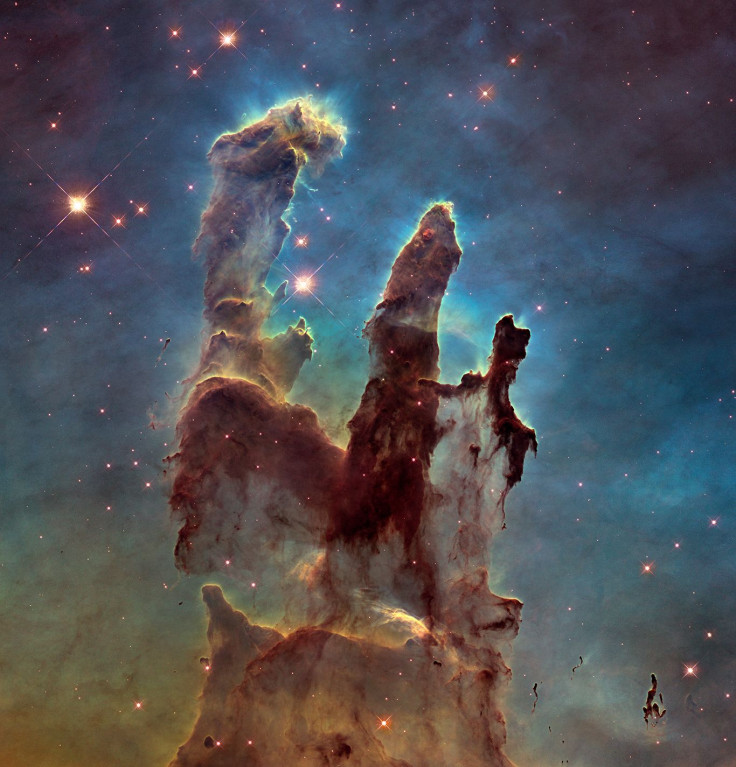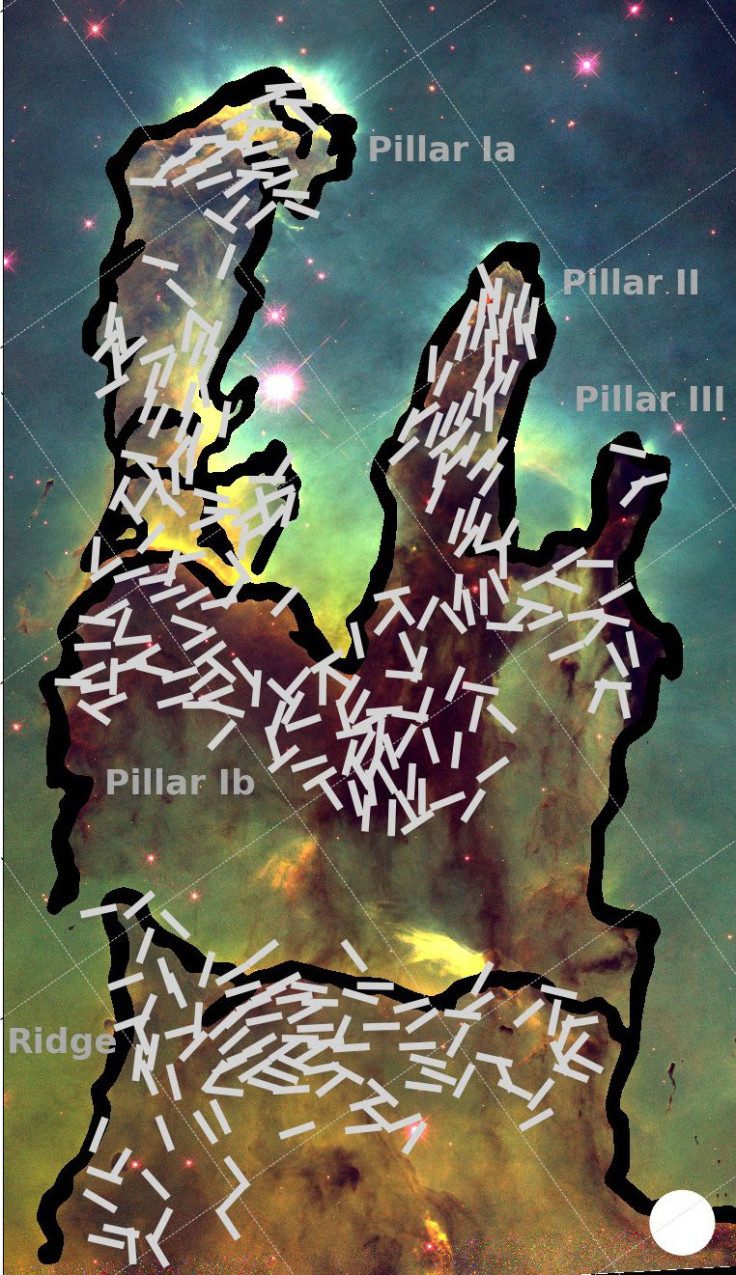Magnetic Fields In Space Explain Unusual Structure Of ‘Pillars Of Creation’

A study conducted by an international team of researchers has revealed new magnetic fields in space, which could explain the unusual structure of the "Pillars of Creation," one of the most famous objects captured by the Hubble Space Telescope, and shed more light into the process of star formation.
Back in 1995, Hubble looked at the heart of the famous Eagle Nebula, aka M16, sitting some 7,000 light years away from Earth in the constellation Serpens. The shot captured three towering tendrils of cold gas and dust that hosted newborn stars in their wispy columns and looked completely different from other butte-like structures commonly seen in active star-forming regions of a nebula.
The iconic image became so popular that it featured in merchandise, TV shows, and movies. But, when the team called BISTRO, led by astronomers from the University of Central Lancashire in the U.K., closely looked at the so-called pillars, they were able to resolve and map their extremely subtle magnetic fields, something that has never been observed before.
Using the polarimeter equipped with the James Clerk Maxwell Telescope (JCMT), operated by the East Asian Observatory in Hawaii, the team demonstrated that the light emitted by the pillars is polarized. This revealed the magnetic fields in the structures as well as their direction.
Once the magnetic fields were identified, further analysis of their direction helped the team confirm that they are running along the three pillars at a different angle in comparison to the regions surrounding them – a fact that explained their unusual structure.
According to the group, the survey indicates that subtle magnetic fields could slow down clumps of gas in a nebula, leading to their collapse and formation of new stars in a pillar-like formation, as seen here. Meaning, the pillars might have evolved due to the strength of the magnetic field and are being held up because of the magnetic support.

The team believes the finding will revolutionize the understanding of star formation.
“The technology employed to view the minutiae of the magnetic fields is truly remarkable, and the fact that we have been able to observe the incredibly weak magnetic field with this sensitive instrument will help us to solve the mystery of the formation of stars,” Derek Ward-Thompson, one of the authors of the latest work, said in a statement.
Just a few months back, NASA released one of the detailed versions of the "Pillars of Creation." The structure spans around four to five light but is just a small feature of the star-forming region of the Eagle Nebula, which covers a whopping area of 70 by 55 light years. While the nebula can be seen with a small telescope, the pillars can be resolved only with a large telescope in suitable viewing conditions.
The study, titled “First observations of the magnetic field inside the Pillars of Creation: Results from the BISTRO survey,” was published June 7 in the Astrophysical Journal Letters.
© Copyright IBTimes 2024. All rights reserved.





















